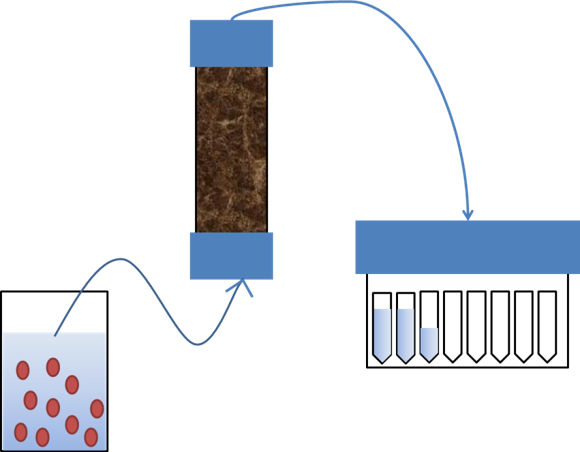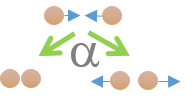Saturated column tests
Saturated, packed column tests are the most accepted way of assessing transport of ENMs in soils, because the transport conditions are more similar to the ENM flow in the field, compared to e.g. batch tests. No air is present in saturated column tests,differentiating them from unsaturated column tests.
 |
1. A 6 cm glass column is wet packed under shaking with soil using an excess of artificial rain water, making sure that no air is trapped in the column. 2. The column is rinsed with 2 pore volumes rain water. Then, a pulse of 2 pore volumes of an inert tracer (e.g. 10 mM NaNO3) is injected, followed by 2 pore volumes of rain water and the conductivity is measured as a function of time in the outflow. 3. After the rinsing period, 2 pore volumes of an ENM suspension (approx. 1 ppm) is injected, followed by 4 pore volumes of rain water. 4. The ENM outflow is captured in 2 mL batches using a fraction collector.
|
Mechanisms & Methods |
Used for |
|
The soil is first dried and sieved 2 mm before packing the soil column. The effective porosity and dispersity are obtained from modelling the inert tracer breakthrough curve, using for example HYDRUS-1D. Analysis of ENM in the collected fractions should occur as soon as possible using ICP-MS. The breakthrough curves of the ENM are used to model the attachment rate. This is either done by estimating the first rate attachment coefficient for the system, e.g. from modelling using HYDRUS-1D, or from the total recovery of the added ENM. |
Read more |
Read also |
|
Visit the NanoFASE Library |
OECD (2017) OECD Guidelines for the Testing of Chemicals, Section 3. Test No. 312: Leaching in Soil Columns. |
Contact

Karin Norrfors
Swedish University of Agricultural Sciences (SLU)

Geert Cornelis
Swedish University of Agricultural Sciences (SLU)
Email: Geert.cornelis@slu.se

